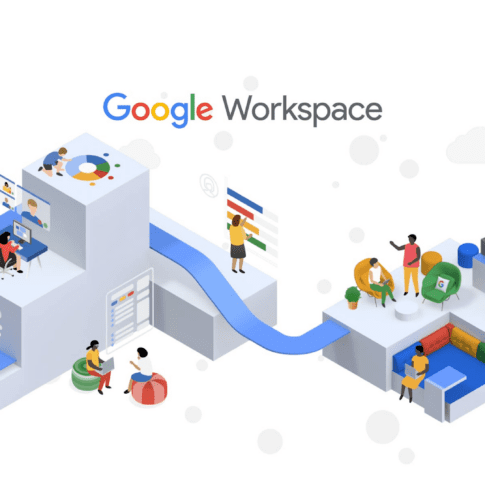What awaits in the (r)evolution of marketing?

Today’s marketing departments face completely different business conditions in relation to those before them. The amount of data available today has become overwhelming, the number of channels has increased, the market segmentation has become even more detailed, and marketing budgets have also increased.
As connected customer experiences become what customers have learned to expect, marketing departments must move away from traditional practices, tactics and tools to meet customer expectations. With more choices, more information and more offers at your fingertips, it takes a lot more tact and precision than ever before to attract, acquire and retain the smart customers of today. The result is a much more complicated – but also exciting – marketing landscape.
How is marketing evolving in the fourth industrial revolution?
Marketing becomes the cross-functional glue of customer experiences.
Customer experience is a much bigger concept than just marketing. But thanks to their perspective on customer requirements and habits, marketing departments are in a unique position that is able to launch an initiative to create customer experiences throughout the organization. 52% of marketing departments share their metrics with sales departments.
Integrated goals and workflows are important to unifying different departments because improvements start from the inside. Almost two-thirds (62%) of marketing leaders say that individuals and teams within their organization are more aligned with each other than ever before. In other words, much more attention is being devoted to supporting and complementing each other in order to create cohesive customer journeys, unlike before, when everyone was focused solely on their own channels or functions. This new way of working is impossible without technology advances, which should support a free and open flow of information between different departments.
Data unification becomes more and more important.
Faced with ever-growing personalization requirements and more data than ever, marketing departments are turning to new ways of unifying data. The average number of data sources has increased by 20% compared to 2017.
Marketing is turning to various types and sources of information – from the open newsletter rates, through web activity, to demographics – to create a vivid image of unique customer needs, preferences and habits. But mere data collection is not enough, because unrelated data does not paint a cohesive image. Only 47% of marketing departments believe that they have a completely unified view of customer data sources. Up until now, marketing departments have used, on average, three different technologies for this. Defining ways to solve this problem is extremely important for a quality strategy. A good CRM platform is what can unify data from all departments – this way, each department can use data from other departments, creating a consistent picture of each client or customer.
Artificial intelligence and data security have become important components of customer experience.
Personalization of customer experiences has progressed significantly over the years and customers have come to expect it. Artificial intelligence brings new levels of possibilities. But security policies about how personal information is used have made customers confused and suspicious, which has brought a new challenge to marketing departments – aligning and balancing personalization and data security.
Using artificial intelligence in marketing has increased by 44% since 2017. Marketing departments have noticed that personalization improves lead generation, acquiring new customers and up-selling, but improvements are visible throughout the entire customer journey. For example, personalization can be thanked for brand building and how likely customers are willing to recommend a product or service to others.
But as personalization capabilities improve, so does the interest in how this information is used, grows. 51% of marketing teams say that they give more attention to the balance between personalization and privacy than they did two years ago.
Marketing departments want to engage customers in real time, across various channels.
Marketing departments strive to communicate with customers in real time, through various channels. But as the number of channels that customers use continues to grow, truly personalized communication that adapts to user habits becomes more and more difficult. 52% of marketing departments use one or more real-time communication channels.
Websites are still a logical first step in many customer journeys. There is discussion about what other channel(s) follows. At each step of the customer’s journey, advertising is very important. Once an individual becomes a customer, well-known e-mail marketing is still immensely important in effective direct communication. We must also not ignore the growing share of mobile devices in our day-to-day lives. The question of channel optimization is becoming more and more complex.
Regardless of the channel, the concept of waiting is slowly disappearing. Expecting real-time communication today involves much more than just a fast response on social media. Such communication is nowadays the highest priority in marketing departments, but also the biggest challenge.
And in the end…
In the fourth industrial revolution, the definition of a “good” experience has changed. Customers don’t just want relevant offers, but want to be treated as individuals, rather than numbers. In today’s culture of immediacy, they also expect communication at the exact moment they need it. Marketing departments today have to think much further outside the traditional marketing framework. Quality marketing must not only provide the right message via the right channel at the right time, but also initiate the initiative to create good customer experiences in their own organizations. Today’s marketing teams can only stand out by adopting strategies that take into account the overall customer journey and the trends discussed here.
Related articles
NIS2, DORA, and the Cybersecurity Act – What Awaits Us?
NIS2 Directive – Who Does It Concern and How to Implement It?

What Is Penetration Testing and Why Do You Need It?

10 Questions You Need to Ask About the NIS2 Directive – and Why It Concerns Us All
HSM in 2024
Why buy a Google license from a local partner?
Google Workspace vs. Microsoft 365 – which one suits your needs better?

What is Google Workspace and how can it help teams collaborate even better?
HSM in 2023